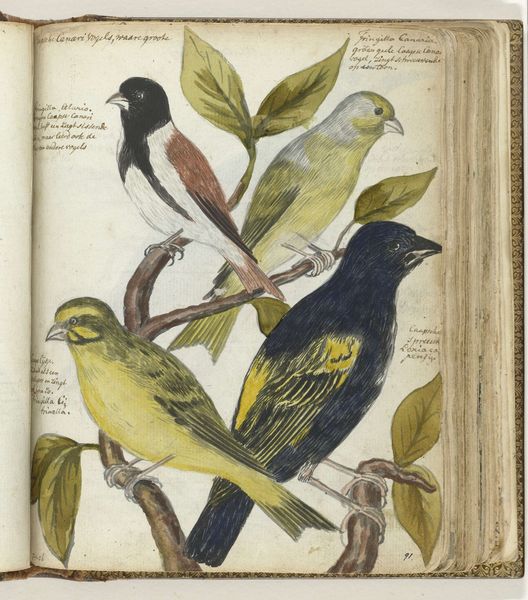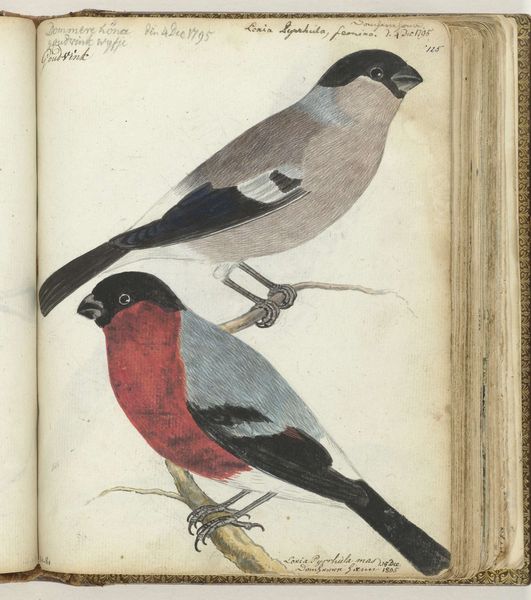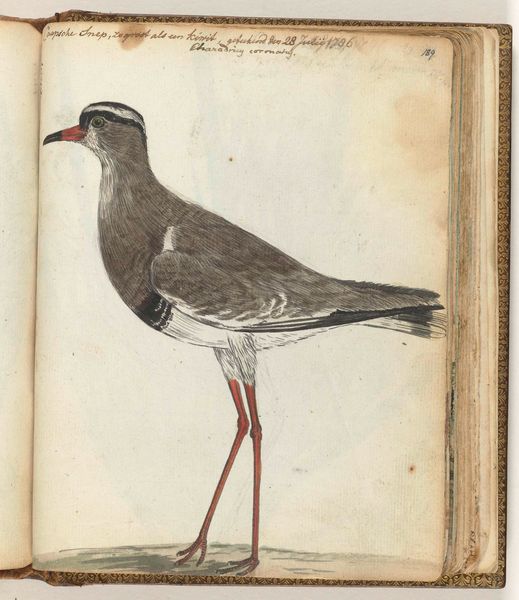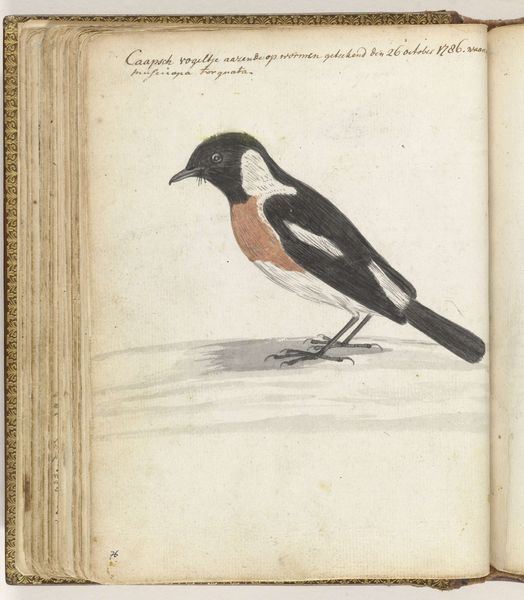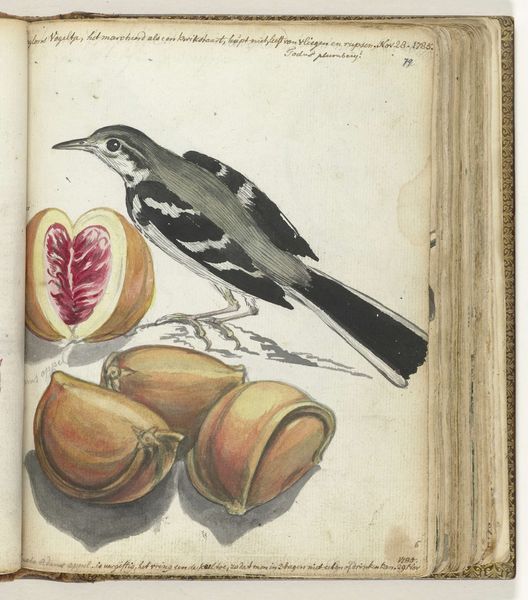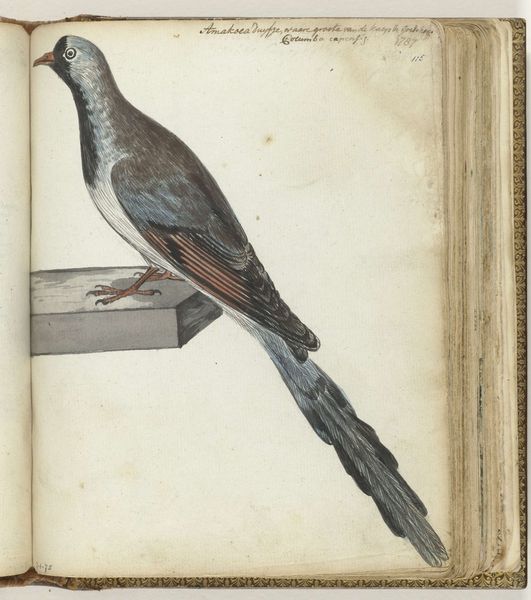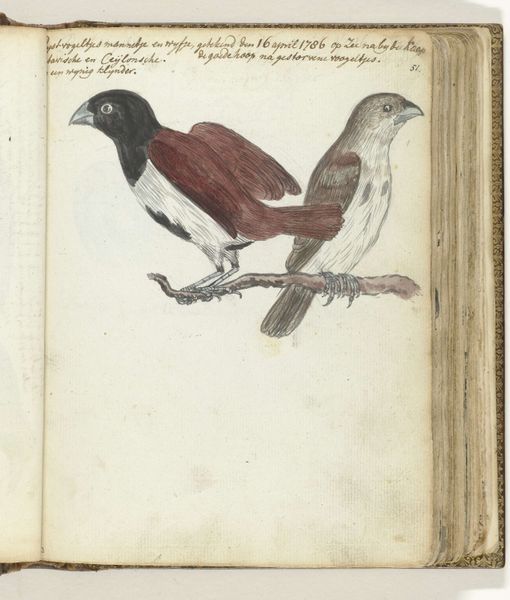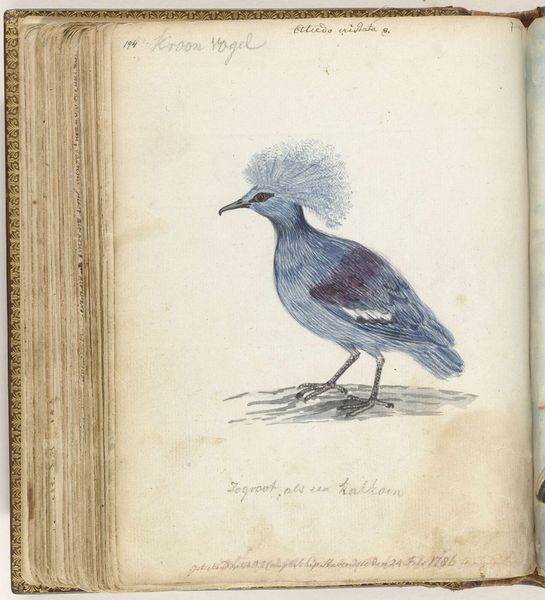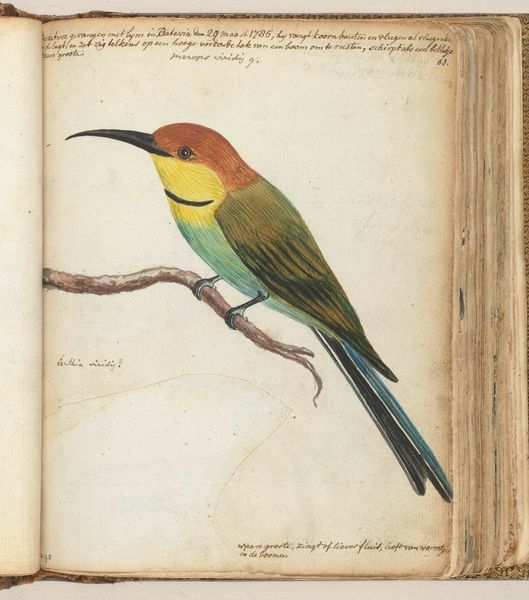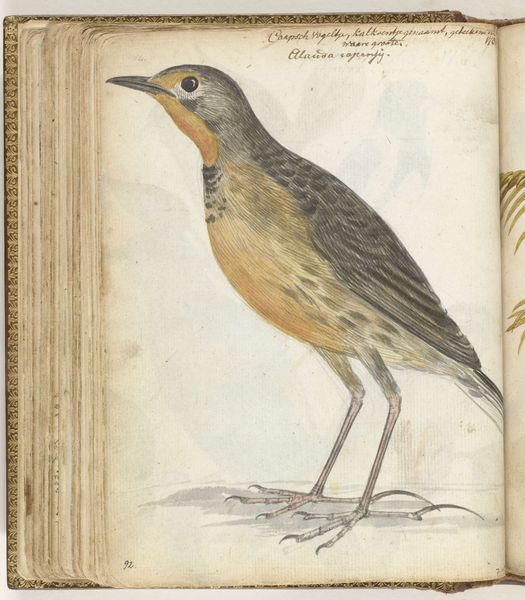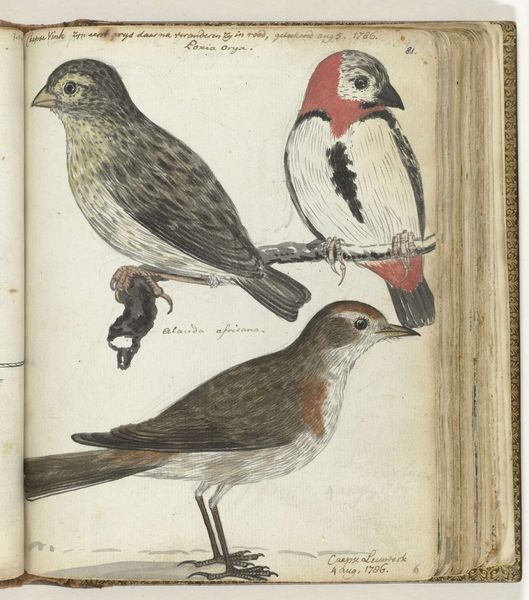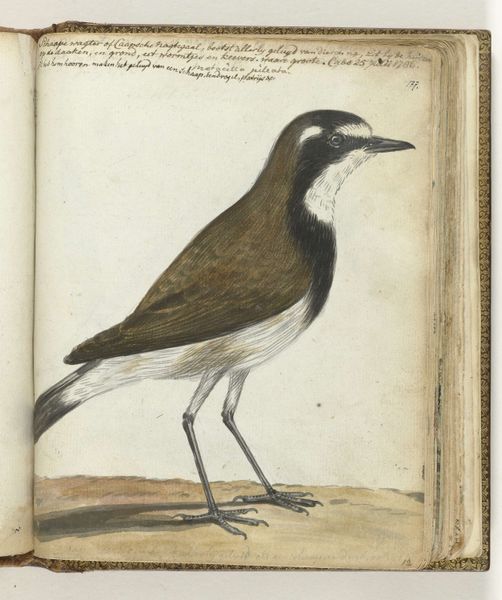
drawing, watercolor, pen
#
drawing
#
water colours
#
landscape
#
watercolor
#
coloured pencil
#
pen
#
watercolour illustration
#
naturalism
#
watercolor
Dimensions: height 195 mm, width 155 mm
Copyright: Rijks Museum: Open Domain
Curator: Here we have “Zweedse vogel,” or “Swedish Bird,” potentially from 1795, attributed to Jan Brandes. It's a mixed media piece, primarily watercolor, with pen and colored pencil details, presented within what looks to be a journal or sketchbook. Editor: It strikes me as remarkably detailed, yet somehow still restrained. There's a formality, even a bit of melancholy, despite the vibrant berries on the right. It reminds me of the careful observations scientists did in their notes on journeys to new places. Curator: Absolutely, it showcases a blend of scientific documentation and artistic interpretation. The meticulous rendering of the bird’s plumage speaks to a dedication to accuracy. Consider how paper production factored into this kind of pursuit. Brandes must have had access to quality materials and specialized instruments to achieve this level of detail. This tells us about the society producing art during this time. Editor: The composition places the bird front and center, almost as if it were a specimen under examination. The open book format contextualizes this as a page from a larger record—a moment captured from someone's travel experiences or research. Were depictions of flora and fauna used as ways for scientists to reinforce colonial power by showing the breadth of newly available material? Curator: Quite possibly, and that reading goes hand in hand with considering Brandes's probable class position and the power structures determining his access to paper, pigments, and specialized artistic training. This wasn't a freely accessible pastime. His output required an economic surplus and a network supporting this type of artisanal production. Editor: And I see that the notes at the bottom of the page mention “Sidenowanks,” referencing its sighting, probably in November of 1795. This offers more specificity, embedding the image within a particular moment in time, solidifying the piece as both artistic and historical. It is the combination of so many aspects that informs on historical and personal levels about scientific discoveries. Curator: Precisely. From a materialist perspective, this drawing isn't just an image; it’s the physical outcome of various socio-economic forces interacting to materialize art. Editor: Understanding its embeddedness and social value also reshapes how we think about these visual artifacts today. It really encapsulates art's ability to speak across temporal distances and varied societal layers. Curator: Indeed. Analyzing process reveals hidden assumptions.
Comments
No comments
Be the first to comment and join the conversation on the ultimate creative platform.
